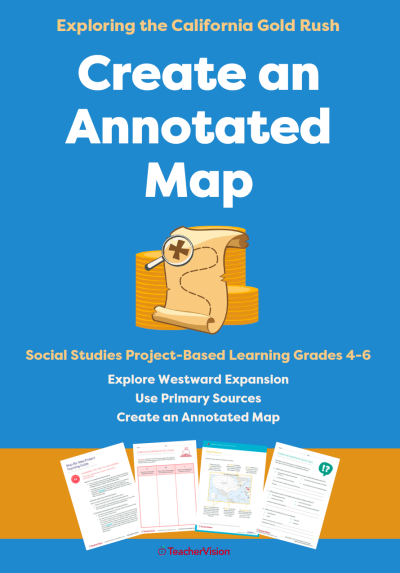Please Note: this latitude and longitude lesson plan was created for use in a classroom but can be easily modified for homeschooling use.
Introduction
This 40-minute latitude and longitude lesson plan will help students understand how latitude and longitude are used to identify places on a map.
Understanding latitude and longitude is crucial for students as these concepts are foundational to geography, navigation, and understanding the world around us. By being able to identify places on a map using these coordinates, students will gain a deeper understanding of how our world is interconnected. This lesson will provide them with the tools and knowledge they need to better grasp these important concepts.
What are Latitude and Longitude?
Latitude and longitude are the coordinates used to identify any location on Earth.
Latitude refers to the lines that run horizontally on the globe, parallel to the equator. It is measured in degrees, with the equator at 0 degrees, and the North and South Poles at 90 degrees north and south respectively.
Longitude, on the other hand, refers to the lines that run vertically from the North Pole to the South Pole. It is also measured in degrees, with the Prime Meridian (which runs through Greenwich, London, UK) at 0 degrees. The coordinates of a place are given in the format of degrees of latitude, followed by degrees of longitude.
Lesson Plan Learning Objectives
In this lesson, students will:
- review what latitude and longitude are.
- be able to identify the latitude and longitude of a city on a map.
- be able to identify a city when the latitude and longitude are provided.
Materials
The following materials are needed for this latitude and longitude lesson plan:
- Wooden sticks, such as tongue depressors or Popsicle sticks; two per student
- Glue or tape
- Black markers, one per student, or pair of students
- Worksheet: Latitude and Longitude.
Latitude and Longitude Lesson Plan
1. Introduce key vocabulary words
The vocabulary your students will need for this activity is latitude, longitude, equator, and prime meridian.
- Latitude: A system of lines used to measure the distance north or south of the equator in degrees. It ranges from 0 degrees at the equator to 90 degrees at the North and South Poles.
- Longitude: A system of vertical lines used to measure the distance east or west of the Prime Meridian in degrees. It ranges from 0 degrees at the Prime Meridian to 180 degrees eastward and westward.
- Equator: An imaginary line drawn around the middle of the Earth, equally distant from both poles. It divides the Earth into the Northern Hemisphere and the Southern Hemisphere. It is located at 0 degrees latitude.
- Prime Meridian: The prime meridian is the line of 0 degrees longitude, the starting point for measuring distance both east and west around the Earth.
2. Distribute wooden sticks
Distribute two wooden sticks to every student and have them glue or tape them together, creating a plus sign.
Ask the students to hold up their sticks so that one is parallel to the classroom walls and the other is parallel to the floor. Write “top” in small letters at the part of the stick closest to the ceiling. Then ask which of the two sticks measures latitude and which measures longitude.
Establish that the vertical stick represents longitude and have the students write “longitude” on that stick, starting with the “l” at the top and moving down the stick. Then establish that the horizontal stick represents latitude and have students write “latitude” across that stick.
Tell students to use their sticks as a reminder if they should get confused over the meanings of latitude and longitude as they complete this activity.
3. Explain that the globe is bisected north to south and east to west
Using a spherical world globe, demonstrate that the globe is bisected north to south between the poles by an imaginary line called the prime meridian, and east to west through its center by the equator.
Put a thin piece of colored tape around the globe at both the prime meridian and the equator and pass it around for students to see. Tell students to imagine the entire globe with a series of vertical and horizontal lines that form a grid by which any point on the earth’s surface can be specified.
4. Complete the worksheet
Divide students into pairs and give each pair a copy of the Atlantic Ocean map and a Latitude and Longitude worksheet. Have them plot the cities for which latitude and longitude are given, and write in the latitude and longitude for the final four cities.
5. Latitude and longitude assessment
Have students exchange their worksheets and maps with another pair of students to check each other’s results. If they find differences, have the pairs work together to find the right answer.
Latitude and Longitude Extension Activities
For further latitude and longitude activities, consider the following:
- Have students use the Latitude and Longitude Finder from Infoplease to locate the latitude and longitude of at least three places. Collect the students’ coordinates and use them for a team quiz bowl, with competing students trying to plot a location on a class map.
- Have students make a map of a make-believe place. It could be a place totally of their imagination, or a place such as Narnia, Atlantis, or Hogsmeade. The maps should have a latitude and longitude grid by which a person could locate specific places.
With this latitude and longitude lesson plan, students will understand how to identify places on a map.





